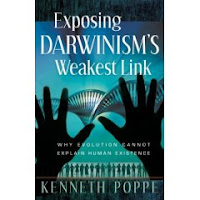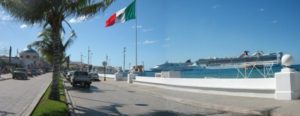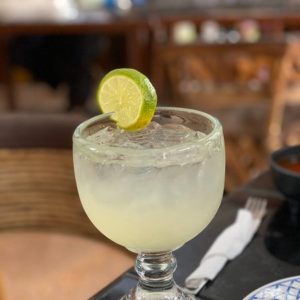
It’s June 15th, time for the Non~FIRST blog tour! Every 15th, we will featuring an author and his/her latest non~fiction book’s FIRST chapter!
The feature author is:
Kenneth Poppe
and his book:
Exposing Darwinism’s Weakest Link: Why Evolution Can’t Explain Human Existence
Harvest House Publishers (March 1, 2008)
ABOUT THE AUTHOR:
 A career biology instructor, Kenneth Poppe holds a doctorate in education and taught in secondary schools for more than 25 years. He is now senior consultant with the International Foundation for Science Education by Design (www.ifsed.org). In addition to working in teacher education and assisting in DNA research of stream ecology, he has authored Reclaiming Science from Darwinism.
A career biology instructor, Kenneth Poppe holds a doctorate in education and taught in secondary schools for more than 25 years. He is now senior consultant with the International Foundation for Science Education by Design (www.ifsed.org). In addition to working in teacher education and assisting in DNA research of stream ecology, he has authored Reclaiming Science from Darwinism.
Product Details:
List Price: $14.99
Paperback: 304 pages
Publisher: Harvest House Publishers (March 1, 2008)
Language: English
ISBN-10: 0736921257
ISBN-13: 978-0736921251
AND NOW…THE FIRST CHAPTER:
The majority is not trying to establish a religion or to teach it—it is trying to protect itself from the effort of an insolent minority to force irreligion upon the children under the guise of teaching science.
—WILLIAM JENNINGS BRYAN
BRYAN WAS THE ATTORNEY FOR THE PROSECUTION AT THE 1925 “SCOPES MONKEY TRIAL” IN DAYTON, TENNESSEE THAT MADE EVOLUTION A HOUSEHOLD TERM. THE ABOVE WORDS ARE FROM HIS
WRITTEN CLOSING STATEMENT, WHICH WAS NEVER READ IN COURT.

1
EXAMINING YOUR FAMILY TREE
A Monkey for an Uncle?
Consider your biological father. He is responsible for half of the genetic codes that shaped your body, and probably some of your personality as well. Now consider his father, your grandfather. If typical, I would guess at least a couple of your body traits are more grandpa’s than dad’s—having somehow skipped a generation. And how about your great-grandfather? Were you lucky enough to know him, even if just like me, through those vague and shifting memories as a very
small boy? Dare I throw in a great-great-grandfather—in my case known only through legend and those grainy black-and-white photos of a roughly dressed man beside a horse and buggy?
Consider that when your great-great-grandfather was your age, for surely he once was, he could try to reconstruct his lineage just as you have done. What names and faces would he have recalled? And if you could piece great-great-granddad’s and your recollections together, that would create a timeline taking you back eight generations—perhaps 250 years or so! Where would you find your ancestors then? In my case, I’m told, the Hamburg, Germany, area. And would my ancestors then be traced to the nomadic Gaelic stock that inhabited Western Europe before formal countries were established there? And then to where? Ancient Phoenicians, Sumerians, Egyptians? And how about yours?
Now to get to the main point. If you kept traveling back in time in this manner, generation after generation, where would you end up? Where would your dad’s ancestors have been living 1000 years ago? 2500 to 5000 years ago? And so on? Those who believe in strict Darwinism would say an extended family schematic would show your ancestors going back several million years ago where they first evolved on the African continent. And on this reverse journey you would see slowly reappearing total body hair, steadily shrinking brains, increasingly sloping foreheads and jaw protrusions, and extending arms whose knuckles would eventually be dragging the ground, assisting a clumsy, bent-over gait. In other words, strict evolutionists say if you could backtrack your family tree for, say, 5 million years, your ancestors would now be closer in appearance to a chimp than a human. And if you continued farther back in time, the coccyx bone at the bottom of your pelvis would extend into a prehensile tail, and the reappearing grasping toes on your feet would send you back to swinging in the trees from whence you came some 10 to 15 million years ago.
Stop and ponder your supposed family tree in this way—a videotape in rewind. Is this really how it went down? Did humans come from monkeys? (Often a Darwinist will answer no to this question by saying it wasn’t a direct path of evolution. But monkeys have to be on the path before apes, right? And apes would have to be on the path before humanoids, right? So it most absolutely is, in theory, “monkey to man”—no matter how crooked the line.) Now if this isn’t the truth, what’s the alternative? Unless you consult primitive worship superstitions, I’ve stated before that the world’s five major religions give you one origin—Genesis—and it includes a tantalizing tale of an innocent man Adam and his companion woman, Eve, in a pristine garden. But for so many, that’s a fairy tale of bigger proportions than monkeys becoming humans. So what is the truth?
Here’s my response. Regardless of which religious view(s) might supply the answer(s), I will stand firmly on this:
There is absolutely no scientific support for the
monkey-to-man scenario—absolutely none.
On the contrary, science, and even philosophy, validate the title of this book and its overriding message as stated a few pages ago.
Either-Or
If there is an alternative answer to the totally unscientific view that monkeys slowly turned into people, ostensibly it is one of the religious variety. But before we tackle the idea, let me first share the concept I find continually bubbling up from the origins cauldron: Almost every major issue concludes with just two choices—either it could have happened this way, or it couldn’t. So grab a writing instrument and check your choice of one of two for each of the ten statements below.
It Could It Couldn’t
Happen Happen
_______ ______ 1. The most violent accidental explosion ever, the big bang, was sufficiently self-appointed to create the largest and most fine-tuned object ever known, the universe.
_______ ______ 2. The sheer number of planets in the universe, and the number of years these planets have existed, give us a mathematical chance that at least one would become a fully interactive biological world—ours—by accident.
_______ ______ 3. Blind luck had the ability to construct the approximately 80,000 different life-required protein chains of specifically sequenced amino acids (from an “alphabet” of 20 different amino-acid choices)—even those proteins 10,000 amino acids long.
_______ ______ 4. The RNA/DNA molecules, containing information equivalent to all the books in 20 standard libraries, suddenly appeared by chance in the “primordial soup” before the first cell was a reality.
_______ ______ 5. Almost as soon as Earth’s conditions permitted, a functional cell appeared, selfprepared with a wide array of metabolizing and reproductive mechanisms.
_______ ______ 6. A half billion years ago, in the blink of an evolutionary eye, the Cambrian explosion self-generated the completely interactive gene pool of all 32 animal phyla with complex organ systems. Once complex life didn’t exist, then it was all there.
_______ ______ 7. After the Cambrian explosion, random scramblings of genetic information kept producing improved genetic codes. This allowed life to surge forward as animals kept giving rise to improved offspring with which, suddenly
or eventually, they could not mate.
_______ ______ 8. These accidental genetic surges adequately explain a whole host of large-scale advances— for example, straight bones in fins turning into jointed bones in legs, reptile scales turning into bird feathers, photosensitive cells turning into eyes, births from amniotic eggs turning into births from a placenta, and chordates like cows or hippos going back into the ocean to become whales.
_______ ______ 9. While animals randomly surged forward within 32 phyla from sponges to mammals, plants accomplished a similar advance in complexity from moss to cacti, but did it in only 8 steps, often called divisions instead of phyla.
And central to this book:
_______ ______ 10. Primates like monkeys left the trees and kept getting bigger, stronger, and smarter. About 5 million years of natural selection was sufficient time for hominids to adapt to walking on their hind legs, learn to use tools,
fashion clothes to wear, master fire, develop first spoken and then written communication, and finally organize societies in cave homes among maple groves that eventually became cottage homes on Maple Street.
So how did you score on this checklist? The two most extreme scores would be to have all ten checks in the right column of “it couldn’t happen”—like me—or all ten checks on the left column of “it could happen.” Of course, you realize that one single check in the right column dooms Darwinism to immediate failure. All it takes is one legitimate “couldn’t” check in this either-or set-up and natural evolution has no chance to produce me the writer, or you the reader. If you can, actually imagine trying to agree with all ten statements as checked on the left, and I’ll wager you’ll feel the full weight of the folly of “self-made” life. Therefore, if you find evolution insufficient in even one instance, you need to consider a bigger-than-science connection— unless, of course, you want to remain apathetic. So, if evolution or apathy is not the answer, I suggest you begin a quest to come to grips with the “God” who engineered this miracle.
Rejecting statement #10 above reflects this chapter’s opening rejection of the idea that all our ancestral lines slowly become more stooped and stupider as we observe the reverse of totally natural processes. If the world generally rejected that notion and stood on the “God alternative” with confidence, it would dramatically change the debate on the other nine statements. And yet if monkeys are not our uncles then how do you explain human origin? How do you explain the master plan of God the Designer?






